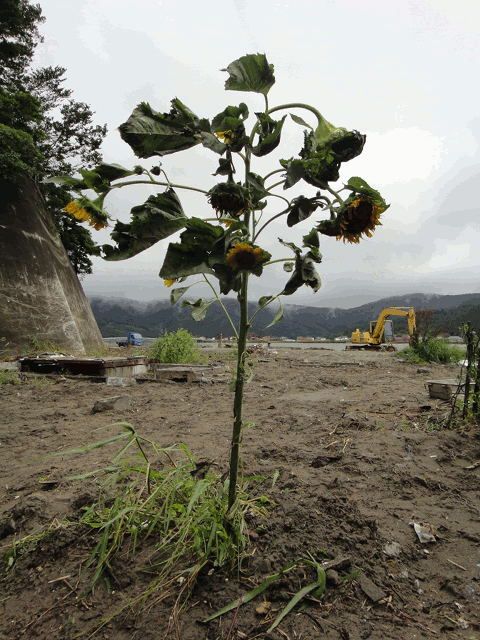Following on this ridiculous story (not to mention the temporary TEPCO worker who died of leukaemia within a few days after starting work at the plant, where he didn't even go near the radioactive bits).
They have been planting a lot of sunflowers up north, perhaps partly because they are tough, bright and quick-growing, but also there has been talk of them soaking up radioactive contamination (which doesn't seem to work so well, but never mind).
Now to my mind, a sunflower has a single big flower head on the top of a stalk. However, the ones up in Tohoku are growing multiple heads! And they were waving and shaking at us if we came too near!
Be afraid. Be very afraid.
They have been planting a lot of sunflowers up north, perhaps partly because they are tough, bright and quick-growing, but also there has been talk of them soaking up radioactive contamination (which doesn't seem to work so well, but never mind).
Now to my mind, a sunflower has a single big flower head on the top of a stalk. However, the ones up in Tohoku are growing multiple heads! And they were waving and shaking at us if we came too near!
Be afraid. Be very afraid.

4 comments:
Thats a triffid.
Oh. I thought it was the sunflower field in The Wizard of Oz.
When I was a child in the 1960s in the south-central Japan (within 30 km range from Hamaoka before nuclear plants were built there), sunflower was the easiest choice among plants for a child to try to grow. But we do not take care of them so well. So the results like the photo were so common that I am not surprised.
As I understand by browsing news, it was revealed that sunflowers concentrate cesium a little, but not a lot. Then, it will be a NIMBY issue how to dispose a lot of materials which is just a little more radioactive than the environment.
By the way, sunflower is called "himawari", based on the notion (partly true, partly myth) that the flowers follow the sun. The name was taken for the Geostationary Meteorological Satellites of Japan Meteorological Agency. Even though the satellite does NOT seem to follow the sun, the name stuck. When the bureaucrats of the Ministry of Transport (then) ordered that there would no longer be GMSs but Multi-functional Transport Satellites (MTSATs), people decided to still call them Himawari.
It seems that the wild(er) varieties are commonly multi-headed, the commercial and fancy floral versions are more likely to be a single head.
Post a Comment